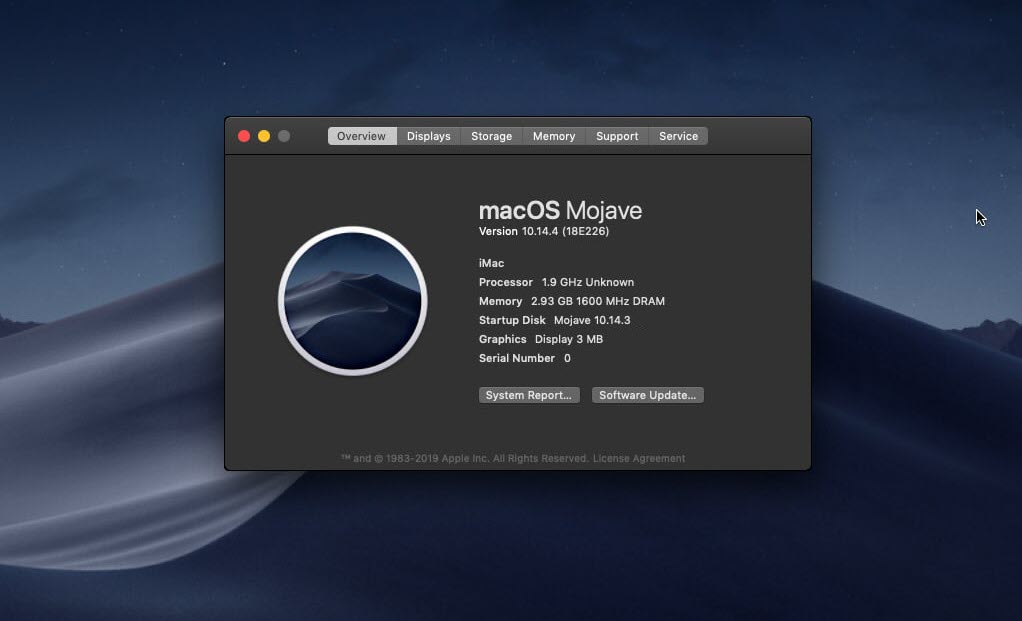

- #VIRTUALBOX DRIVE FOR MAC OS X HOW TO#
- #VIRTUALBOX DRIVE FOR MAC OS X MAC OS X#
- #VIRTUALBOX DRIVE FOR MAC OS X INSTALL#
- #VIRTUALBOX DRIVE FOR MAC OS X UPDATE#
The OS X Installer "DVD" (the thing you create to install OS'es) fixes this and makes a disk bootable. Note, when you format a drive I believe it is missing some HFS volume header information that makes it bootable. I don't know of any way to format the disk from the host. You need to boot a VM and format the new disk within a guest. If you create a new disk be aware it is unformatted and cannot be mounted. When you've created a new fixed format disk image you need to go into the settings for each VM that uses the dynamic disk and replace it with the newly created fixed disk. VBoxManage clonemedium disk old.vdi new.vdi -variant Fixed Use this command to convert a dynamic file into a new fixed file. You cannot mount dynamic disks, they must be fixed. Mounting fixed size disks only (no Dynamic disks) All of these things are done on the host unless otherwise stated.
#VIRTUALBOX DRIVE FOR MAC OS X UPDATE#
I'll try to update this if I find new information as I use this.
#VIRTUALBOX DRIVE FOR MAC OS X MAC OS X#
I tested this all running VirtualBox 5.0.2, Mac OS X 10.9 as the host, and Mac OS X 10.6 as the guest.
#VIRTUALBOX DRIVE FOR MAC OS X HOW TO#
Read on if you want to know how to mount the filesystem and how to make that filesystem bootable. I also wanted to be able to mount the guest filesystem on the host. I tried cloning existing images and resizing them but when I booted the enlarged images Disk Utility would never let me expand the size of the volume. I wanted to be able to create OS X VirtualBox images quickly and easily without having to run an OS X installer every time. Maybe someone else will figure out how to do this. The reason I am posting it is because it's a lot of interesting info. I never posted this because after using VM's I created this way for a few days they quit booting. I wrote this back in Sept 2015 but am just posting it in Apr 2016. I added more than 3 times the information and added a whole new page discussing the UEFI interactive shell. diy-capacitive-stylus-for-ipad-and-iphone.Mounting VirtualBox HFS+ VDI files on OS X.Reading the keychain with a perl script.I posted a detailed guide on my blog about how to create a Yosemite VM, feel free to check it out if you're interested.Mounting VirtualBox HFS+ VDI files on OS X - Magnusviri Graphics are still slow (and it's even worse in Yosemite) but besides the login screen which takes a good 5 seconds to render due to its transparency, everything else is pretty usable, and it's enough for occasional (hobby) iOS development until you get enough experience to make profitable apps in which case it's still better to buy a real Mac as this setup may break at any update. An SSD is a must have though, a hard drive will be bloody slow (that's also true for a real Mac). In the end, with my solution I am able to successfully run Yosemite with 3,5GB of RAM (out of the 4GBs of my computer, and by tweaking the host system I could probably push it even more to 3,7GB), using the two cores of my CPU, with reliable USB pass through and no tweaking required (the emulated hardware is close enough to a real Mac that the OS boots directly without any kernel command line parameters or extra kexts). What you can do (and I have done it with much success) is use a lightweight Linux installation as a base for QEMU which is a Virtualbox alternative, with much more configuration options, including the ability to emulate the Apple SMC and its "OSK" string (you won't need shady "hackintosh" kexts) and it has reliable USB pass through (I successfully restored iOS devices and installed apps on them). Virtualbox on Windows is definitely not suitable for this, as Windows itself is quite resource-hungry, Virtualbox lacks many configuration options and even if you can get it to work it's going to be quite unreliable, not to mention that you can't pass through USB devices.


 0 kommentar(er)
0 kommentar(er)
